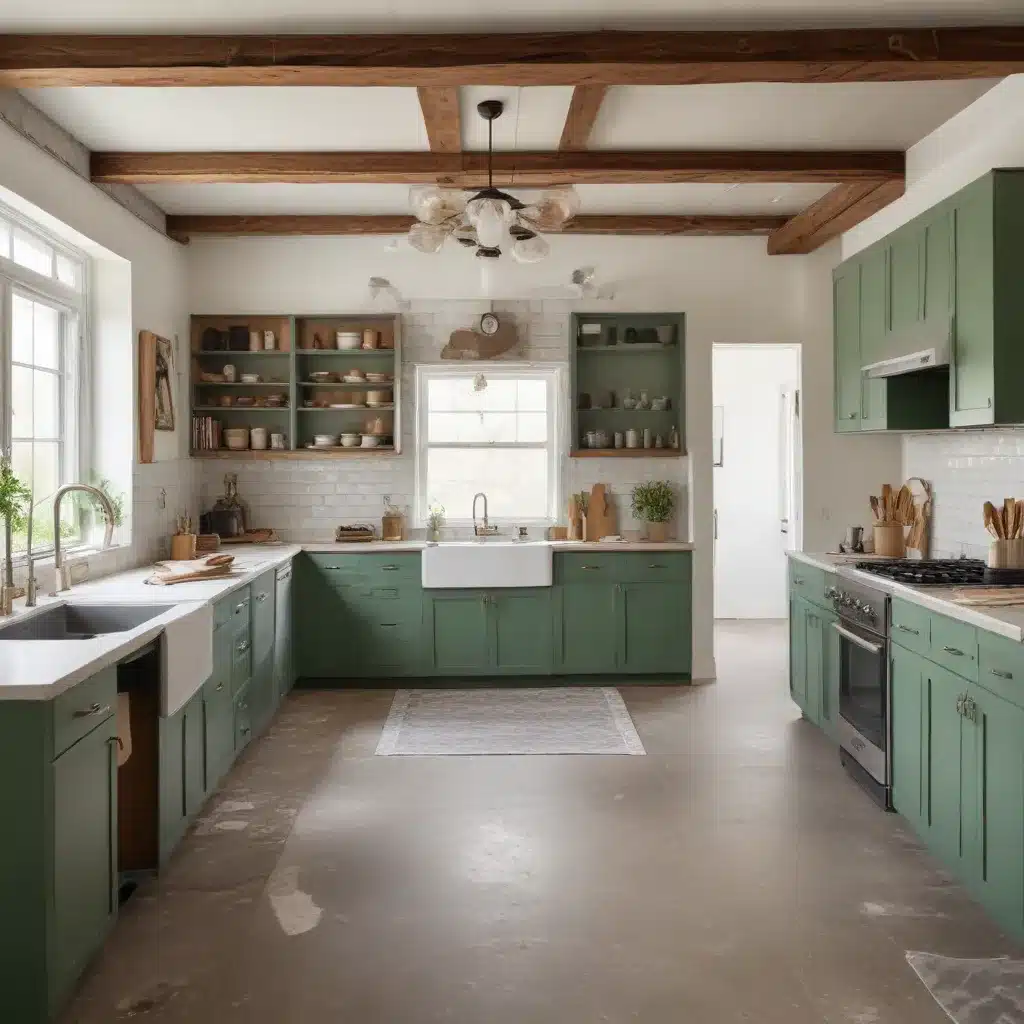
Repurposing and Recycling in Eco-Friendly Home Renovations
Embarking on a home renovation project is an exciting endeavor, breathing new life into your living space and increasing its functionality. However, as you embark on this journey, it’s essential to consider the environmental impact of your project. Recycling and repurposing building materials during home renovations can be a game-changer, benefiting both the planet and your wallet.
Sustainable Materials for Home Renovations
Reclaimed and Recycled Building Supplies
Renovating your home doesn’t have to mean sending truckloads of materials to the landfill. Instead, look for opportunities to recycle existing components or repurpose them in creative ways. Cabinetry, doors, windows, flooring, and even appliances can often be salvaged, refinished, or reconfigured to fit your new design. Habitat for Humanity’s ReStore locations are a fantastic resource for finding high-quality, affordable, and eco-friendly building materials.
Renewable and Biodegradable Options
When selecting new materials for your renovation, prioritize those that are renewable or biodegradable. For example, consider using bamboo for flooring or countertops, which is a fast-growing grass that can be harvested sustainably. Cork is another excellent choice, as it’s a renewable resource harvested from the bark of cork oak trees. Look for low-VOC paints and formaldehyde-free insulation to improve indoor air quality and reduce your environmental footprint.
Eco-Friendly Insulation Choices
Insulation plays a crucial role in improving a home’s energy efficiency, and there are several eco-friendly options to consider. Cellulose insulation, made from recycled newspaper or cardboard, is a sustainable choice that performs well and can even be installed in existing wall cavities. Wool insulation, derived from sheep’s wool, is a natural, breathable material that regulates temperature and humidity. For a modern approach, spray foam insulation provides superior thermal and air sealing properties, reducing energy consumption and improving comfort.
Upcycling and Repurposing in Home Design
Transforming Existing Furnishings
Rather than discarding old furniture or cabinetry, explore ways to repurpose and upcycle them. A dated dresser can be transformed into a bathroom vanity with a little creativity and some new hardware. Kitchen cabinets can be reconfigured and refinished to suit a different room or even a backyard shed. Look for opportunities to breathe new life into existing pieces, saving money and reducing waste.
Repurposing Household Items
Thinking outside the box can lead to some truly unique and eco-friendly design solutions. Consider repurposing everyday household items in unexpected ways – for example, using vintage suitcases as side tables or turning old ladders into stylish shelving. Peruse thrift stores, yard sales, and antique shops for one-of-a-kind items that can be repurposed to suit your renovation needs.
Vintage and Antique Decor
Incorporating vintage and antique elements into your renovation can add character and charm while reducing your environmental impact. Scour flea markets, estate sales, and online marketplaces for unique light fixtures, door hardware, and decorative accents that can be seamlessly integrated into your new design. These pre-loved items often have a story to tell and can become the focal point of a room.
Energy-Efficient Home Upgrades
Investing in Renewable Energy
As part of your eco-friendly renovation, consider incorporating renewable energy sources, such as solar panels or a geothermal heat pump. These systems not only reduce your carbon footprint but can also provide long-term savings on your utility bills. While the upfront costs may be higher, the long-term benefits often outweigh the initial investment, making your home more sustainable and energy-efficient.
Maximizing Natural Lighting
One of the easiest and most cost-effective ways to improve a home’s energy efficiency is by maximizing natural lighting. This can be achieved through strategically placed windows, skylights, and light tubes, which reduce the need for artificial lighting during the day. Coupled with the use of energy-efficient light bulbs, this approach can significantly lower your energy consumption and utility costs.
Improving Thermal Performance
Enhancing a home’s thermal performance is crucial for reducing energy use and improving comfort. In addition to high-quality insulation, consider upgrading windows and doors to energy-efficient models that better regulate heat transfer. Incorporating shading devices, such as awnings or blinds, can also help control solar gain and minimize the reliance on air conditioning.
Eco-Friendly Landscaping and Outdoor Spaces
Native and Drought-Resistant Plants
When landscaping your outdoor spaces, opt for native and drought-resistant plant species that are well-suited to your local climate. These plants require less water, reduce the need for fertilizers and pesticides, and provide valuable habitat for local wildlife. By creating a lush, sustainable landscape, you can enhance your home’s curb appeal while minimizing your environmental impact.
Sustainable Hardscaping Materials
Hardscaping elements, such as patios, walkways, and retaining walls, can also be designed with eco-friendly materials in mind. Consider using permeable pavers that allow rainwater to percolate into the soil, reducing stormwater runoff. Reclaimed bricks, recycled concrete, or natural stone can also be used to create beautiful and sustainable outdoor living spaces.
Rainwater Harvesting Systems
Capturing and reusing rainwater is an excellent way to conserve this precious resource. Install a rainwater harvesting system, which collects runoff from your roof and stores it for later use in irrigation, washing cars, or even flushing toilets. This not only reduces your reliance on municipal water sources but also helps to mitigate the impact of droughts and reduce the strain on local water supplies.
As you embark on your home renovation journey, keep these eco-friendly strategies in mind to create a space that is not only beautiful and functional but also kind to the environment. By repurposing, recycling, and investing in sustainable materials and upgrades, you can transform your home while reducing your carbon footprint and saving money in the long run. Visit Reluctant Renovator for more inspiring ideas and practical tips to make your renovation project a resounding success.



